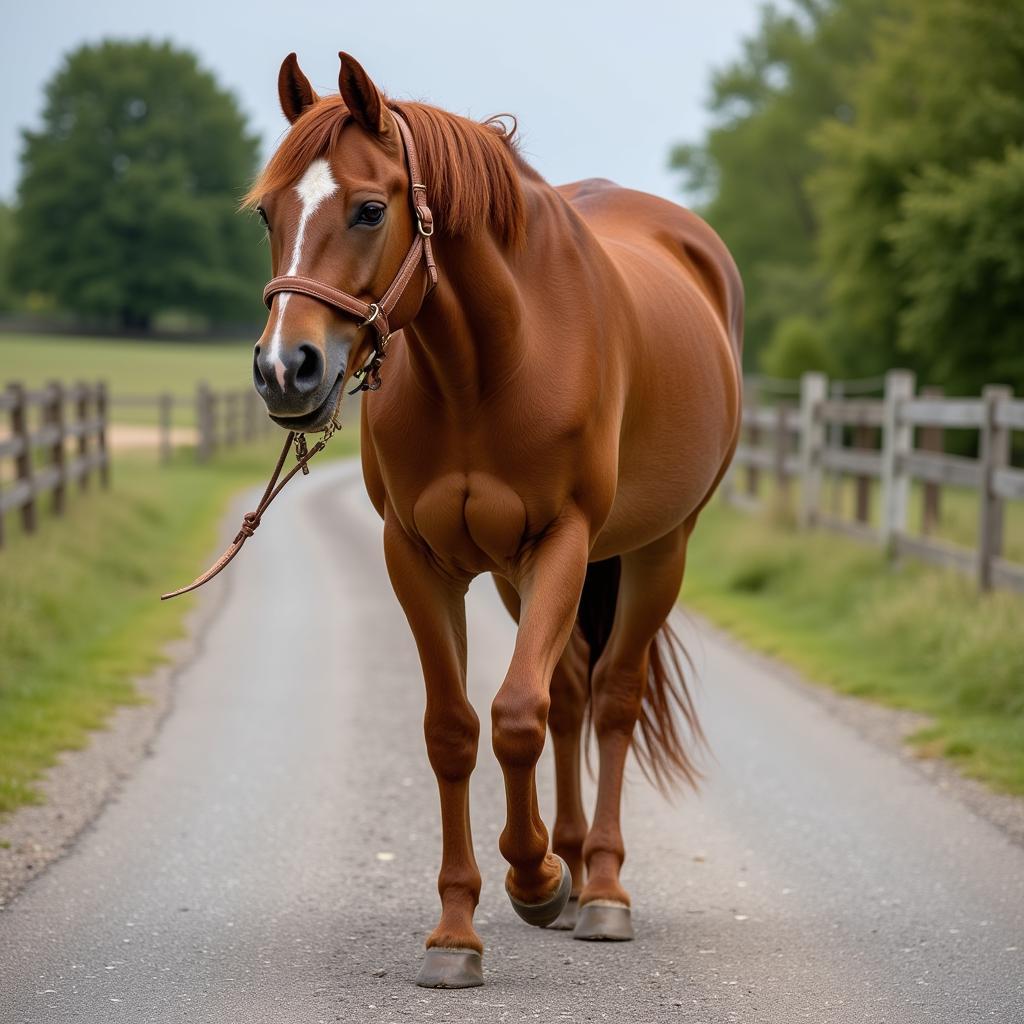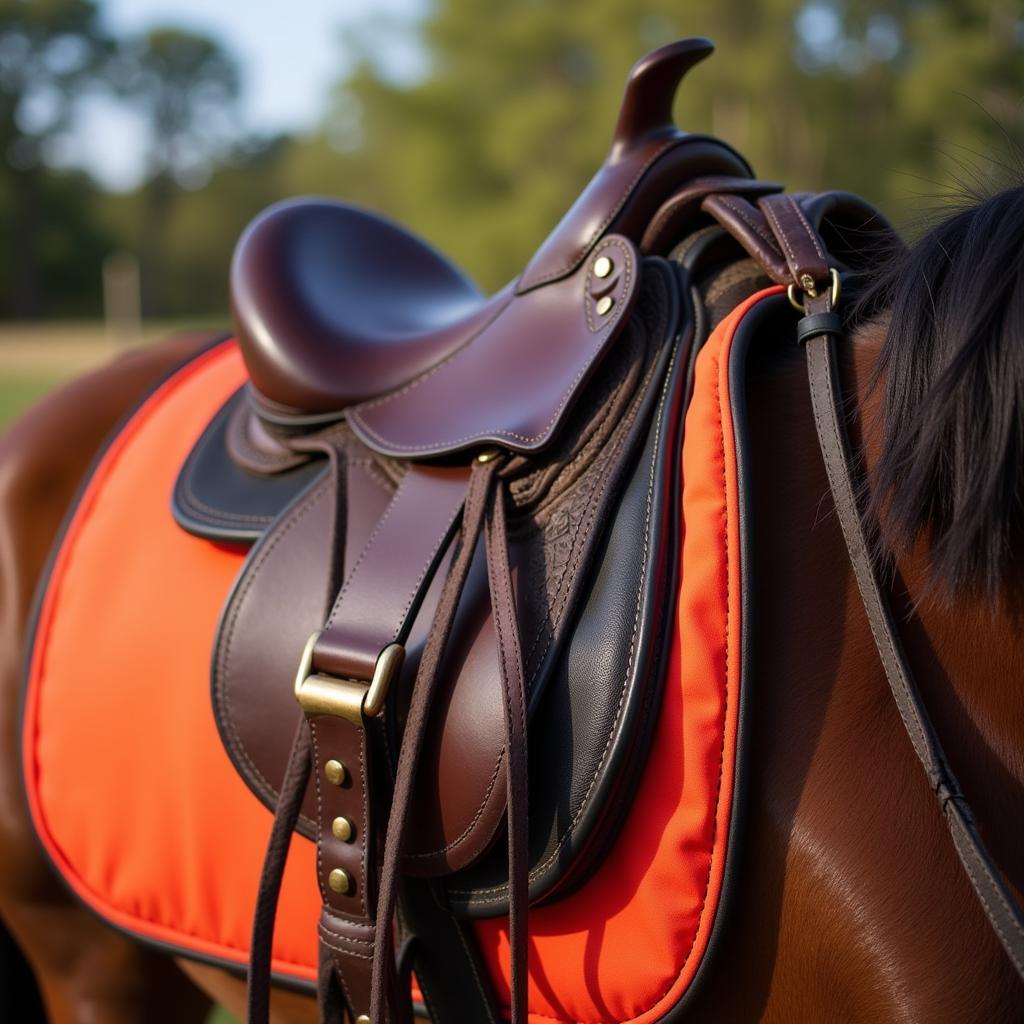For many horse owners, the allure of a leisurely trail ride through picturesque landscapes is a powerful draw. However, not every horse thrives on endless hours of demanding work. Some, shall we say, prefer a more… relaxed approach to their equestrian pursuits. If this sounds familiar, then “gravel grinding” might be the perfect activity for your “lazy horse”.
 Horse leisurely walking on a gravel road
Horse leisurely walking on a gravel road
What is Gravel Grinding with Horses?
Gravel grinding with horses simply means choosing routes that primarily consist of well-maintained gravel roads. These paths are generally flatter, smoother, and less demanding than rugged mountain trails, making them ideal for horses who:
- Are recovering from injuries
- Are older and not as spry as they used to be
- Are naturally more laid-back
- Haven’t been ridden in a while and need to build up stamina
Benefits of Gravel Grinding for Your Lazy Horse
While it may sound counterintuitive, encouraging your “lazy horse” to engage in regular, low-impact exercise like gravel grinding can actually be highly beneficial:
- Improved Fitness: Even a leisurely pace helps to maintain muscle tone, cardiovascular health, and joint flexibility.
- Weight Management: For horses prone to packing on the pounds, gravel grinding offers a way to burn calories without overexertion.
- Mental Stimulation: A change of scenery and the opportunity to explore new sights and smells can do wonders for a horse’s mental well-being.
- Bonding Time: Gravel grinding provides a relaxed setting for you to connect with your horse and enjoy their companionship.
Planning Your Gravel Grinding Adventures
Before you and your “lazy horse” embark on your first gravel grinding adventure, there are a few key things to keep in mind:
1. Assessing Your Horse’s Fitness Level
It’s important to have a realistic understanding of your horse’s current fitness level. If they haven’t been ridden much lately, start with short, easy rides and gradually increase the distance and intensity over time.
2. Choosing the Right Gear
While specialized tack isn’t necessary for gravel grinding, comfortable, well-fitting equipment is essential for both you and your horse. Consider using:
- A well-padded saddle
- Breathable saddle pads
- A bitless bridle or hackamore, if preferred
 Horse and rider outfitted for gravel grinding
Horse and rider outfitted for gravel grinding
3. Finding Suitable Trails
Look for well-maintained gravel roads with minimal traffic. Forest service roads, abandoned railroad grades, and dedicated equestrian trails can all be great options.
4. Prioritizing Safety
- Always wear a helmet
- Carry a first-aid kit for both you and your horse
- Let someone know your riding plan and expected return time
- Be aware of potential hazards, such as loose gravel, wildlife, and vehicles.
Tips for Enjoyable Gravel Grinding
- Vary the Terrain: While gravel roads are the focus, don’t be afraid to incorporate short stretches of other surfaces, like grass or dirt, to add variety.
- Take Breaks: Regular breaks allow your horse to rest, hydrate, and enjoy the scenery.
- Bring Company: Riding with friends is always more fun! Invite other “lazy horse” owners to join you.
Making Memories, One Gravel Road at a Time
Gravel grinding offers a wonderful way to enjoy the great outdoors with your horse, regardless of their energy levels. By prioritizing safety, comfort, and a relaxed pace, you can create lasting memories while strengthening the bond between you and your equine companion.
Remember, the most important thing is to have fun!
FAQ
1. Can I gravel grind with my horse if they have arthritis?
It’s best to consult with your veterinarian. They can assess your horse’s specific condition and advise you on appropriate activities.
2. How far can I ride my horse on gravel?
This varies depending on your horse’s fitness level, the weather conditions, and the terrain. Start with shorter rides and gradually increase the distance as your horse becomes more conditioned.
3. What should I do if my horse gets lame on a gravel grinding ride?
If your horse becomes lame, stop riding immediately and assess the situation. If possible, dismount and walk your horse back to the trailhead or your vehicle. Contact your veterinarian for guidance.
Need Help?
For personalized advice on caring for your horse, contact Justus Horses USA at 0772127271, [email protected] or visit us at QGM2+WX2, Vị Trung, Vị Thuỷ, Hậu Giang, Việt Nam. Our team is available 24/7 to assist you.